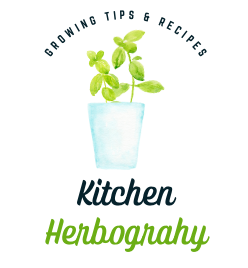As an Amazon Associate I earn from qualifying purchases. This website also participates in other affiliate programs and may earn commissions if you shop through the links used on this website.
(This article was originally published on August 6, 2021 and was last updated on September 15, 2022)
Basil is a delicious, fragrant herb that can be used in many different types of dishes. However, if you’re not careful, basil will get too large and start to produce flowers instead of delicious leaves. This post offers advice on how to prune basil plants so they continue producing leaves for months, and you have all the basil you want for your kitchen!
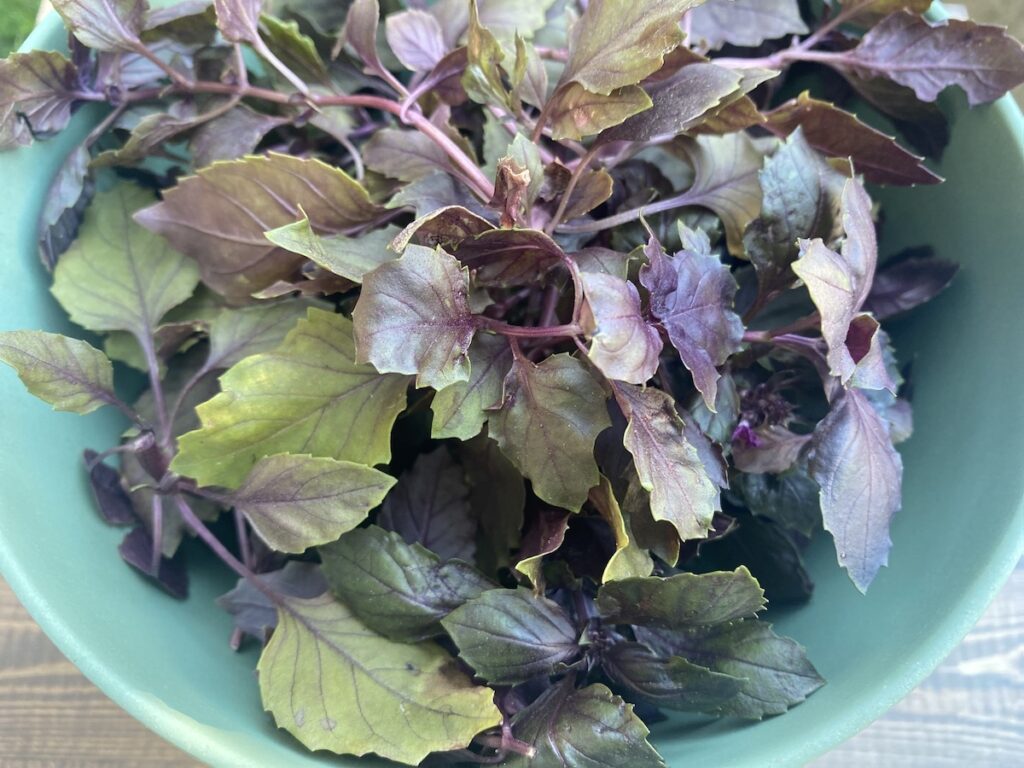
__
If you’re new to growing basil and you’re on your first basil plant, it can be a bit intimidating figuring out the whole plant care part of things.
While basil plants are fairly easy to grow – and they’re definitely a common herb to grow at home indoors and in your garden – they can also be a bit finicky, demanding consistent soil moisture, adequate space in a nice pot or your garden, a huge dose of sunlight each day, and warm growing conditions.
Once you’ve figured out how often to water your basil plant and have healthy, thriving plants, you might be tempted to just leave them alone, and let them do their thing in your garden, or on your windowsill or patio.
This, my friends, is the wrong instinct.
You need to harvest basil, and do it fairly often at that! If you neglect your basil plant, you’ll miss out on a plentiful, fresh and ongoing garden harvest.
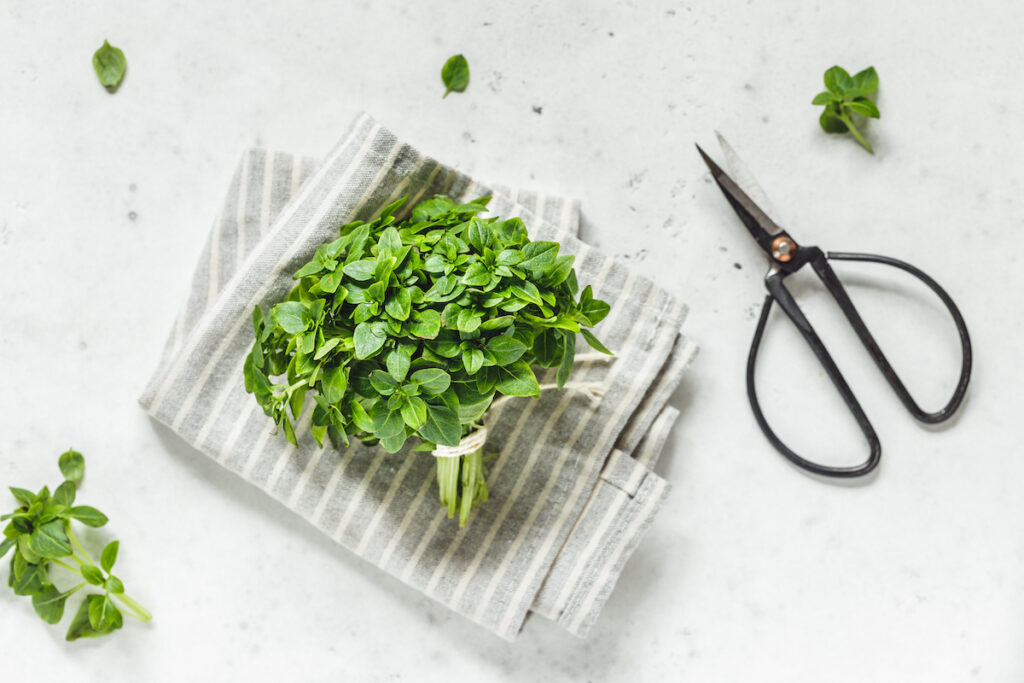
More Than 7,000 People Can’t Be Wrong!
For one-off problems with your basil or herb garden, a quick Google to solve the problem is great.
But if you want more help getting the herb garden of your dreams, mastering cooking with basil, or other creative uses of basil, Skillshare has some awesome herb-related courses (plus a ton of other interesting, useful and cool courses).
To date, more than 7,000 students have taken Indoor Gardening: Grow Houseplants, Veggies, and Herbs!
Normally Skillshare Gives A 7-Day Free Trial. You Get A 30-Day Free Trial (OR 30% Off An Annual Membership)
Our friends at Skillshare have graciously offered our readers an extended free trial, using this link here to sign up. Instead of 1 week to try out all their courses, you get a full month to try courses like:
- Indoor Gardening: Grow Houseplants, Veggies, and Herbs // (use this link to get a 30-day Free trial) // (use this link to 30% off an Annual Membership)
- Create a Small Space Edible Garden // (use this link to get a 30-day Free trial) // (use this link to 30% off an Annual Membership)
- 5 Easy to grow herbs, sowing, growing and harvesting // (use this link to get a 30-day Free trial) // (use this link to 30% off an Annual Membership)
- Crafting Infused Tea: Herb, Flower, and Fruit Iced Teas // (use this link to get a 30-day Free trial) // (use this link to 30% off an Annual Membership)
Sign up for a FREE 30-Day Trial (this link only)
Or Save 30% Off An Annual Skillshare Membership
If you know you’re going to love Skillshare, you can also sign up for an annual membership and save 30% with this link.
Why You Need to Harvest and Prune Basil Plants Regularly
If you love basil as much as me, you want your basil plants to keep giving.
After all, pesto requires a pretty full on harvest of basil leaves, and in addition to pesto, I want to enjoy basil in my leafy green salads, with caprese and balsamic, on our homemade pizzas….well, on a lot to be honest.
When it comes to fresh basil leaves, I am greedy and I don’t feel badly about that!
Which brings me to pruning basil plants.
If you want your basil plant to keep producing gorgeous, tender, and fragrant leaves, you need to learn how to prune basil leaves pronto.
And despite your instinct to just pinch a few leaves from the stems, here and there, or simply remove damaged leaves with holes or white, yellow, black or brown spots, you actually need to prune basil fairly aggressively, even with seedlings that are quite young. You can even use the cuttings to grow new basil plants!
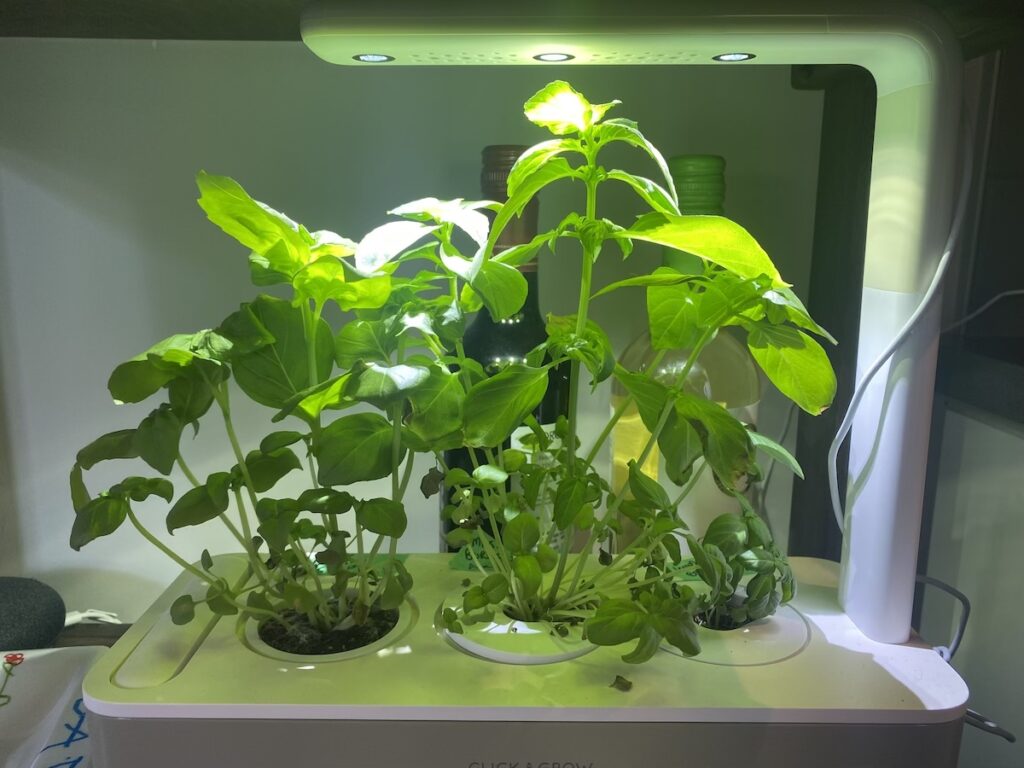
Left to Its Own Devices, Basil Plants will Flower
Here’s why.
Basil plants are annuals, which means that if you leave them, they’ll follow their natural lifecycle. This includes producing basil flowers, and then seeds (which you should definitely collect, if it comes to it), and then dying off around the time of the first frost of winter.
Once you see a flower or three, your basil plant’s days are most likely numbered. You see, the flowers signal to the basil plant that it’s time to produce seeds for next year. Instead of putting its energy into making those gorgeous, large, and tender basil leaves you want for your salad? It puts its energy into the seeds. Within weeks, the basil leaves produced are a shadow of the delicious and fragrant leaves it once did.
Beyond that, though, basil will inherently get kind of mangy, top heavy, and can get all droopy and wilted if you don’t prune it. Basil doesn’t naturally thrive when it’s 15 inches tall – rather, it’s best grown as a nice healthy bush.
Even better, when you lop some off, it will produce side shoots, just like a tomato plant would. Technically speaking, it bifurcates, producing two stems for every one you cut.
Learn How to Harvest Basil Plants & Create a Plant that Keeps Giving
If you want all the basil you can eat, you need to be more aggressive about pruning basil.
Learning how to prune properly is what will encourage the plant to give you more and more tender leaves, and keep going for much longer than a plant that’s more or less left alone.
If you’re ready to learn how to prune basil keep reading for your intro!
How to Prune Basil to Maximize Leaves and Deliciousness
When it comes to pruning basil, you can’t be afraid of the plant.
Lots of novice herb gardeners will pick a few leaves off a stem, here or there, as they’re making a meal. They never really go to town cutting the plant.
That’s the wrong approach.
The right approach is to get your scissors or pruning shears out, and go for it, lopping off whole top sections.
Cut at least the top two leaves from each stem, as a minimum
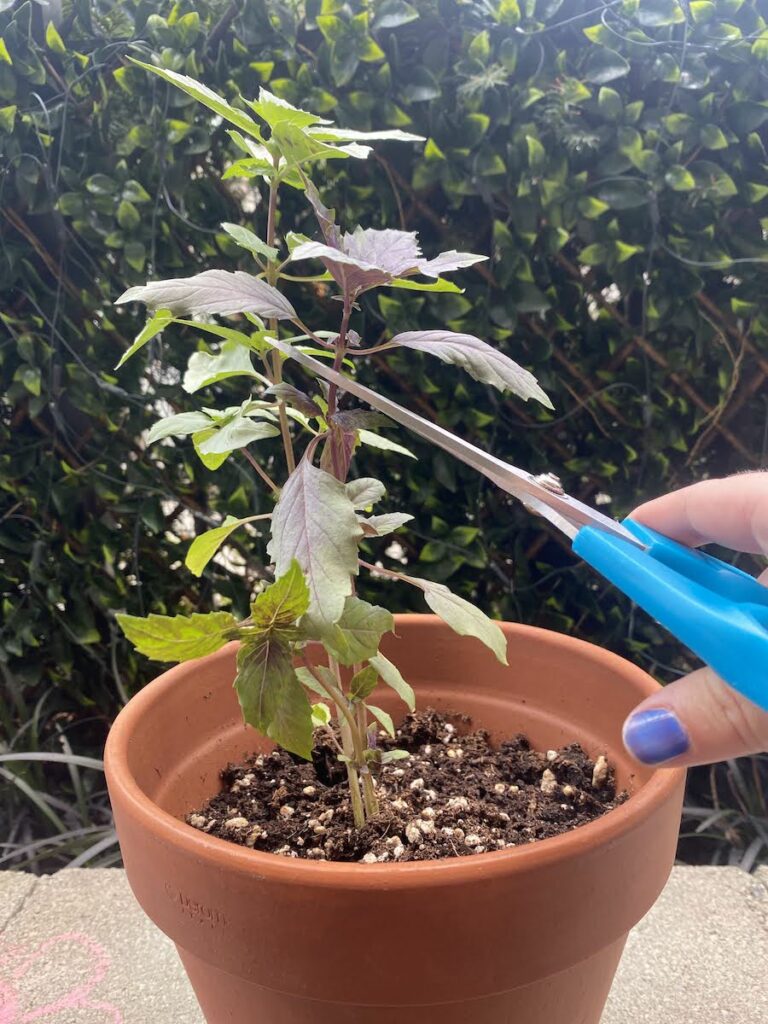
Looking from the bottom of the plant up, you want to leave two sets of leaves on each stem, but cut whole branches / stems above that.
And when I say cut, I really mean cut. Cut the stem off, don’t just pinch the leaves off.
When you lop off branches at a time, it will signal to the plant it’s time to bud and grow to replace what you just took. Every time you cut basil, it bifurcates – or splits into two. So you want to cut frequently to encourage this, as this will increase growth and the sets of leaves you get!
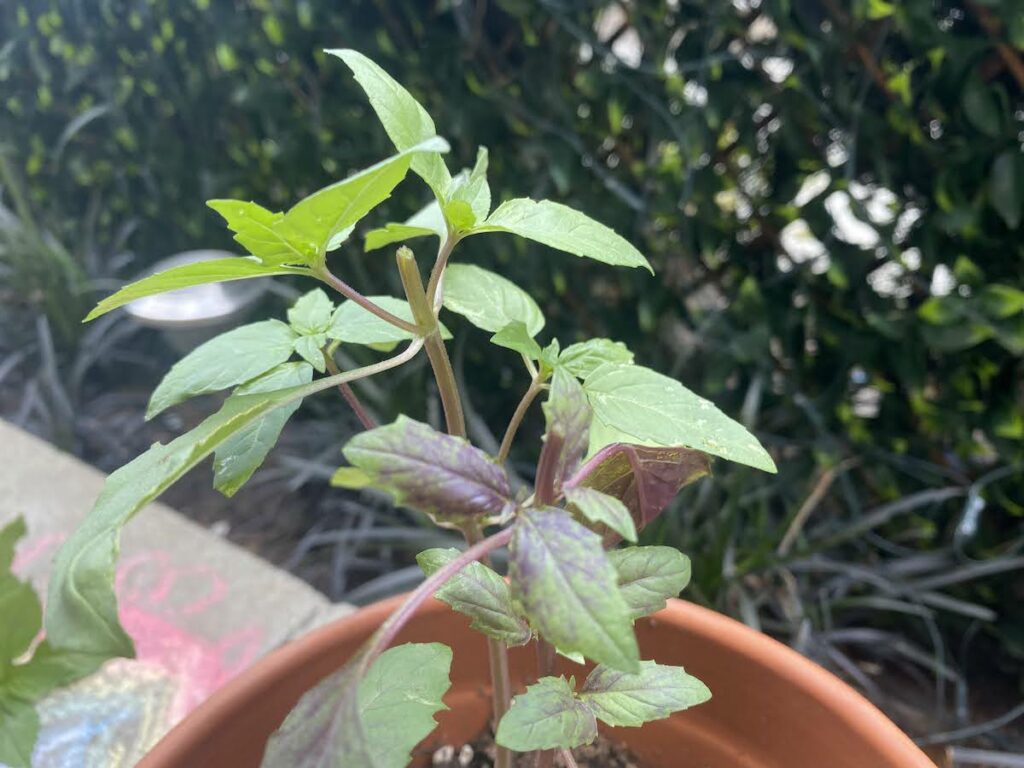
If you search how to prune basil, some sites suggest pruning every two to three weeks. However, in my experience you can do it more frequently, especially when it’s hot and your basil is growing quickly. I try to prune every week to two weeks, instead, especially during summer.
In other words? Repeat regularly for a nice, bushy plant.
This will give you a healthy basil bush with plenty of new branches and stems, and you should be able to harvest plenty from the bush.
Soak at Night, Harvest in the Morning
If you plan to harvest, an important tip is to give the basil plant a good soak the night before, with water running out the drainage holes in the bottom of the pot.
After soaking at night, harvest in the morning, before the heat of the day sets in.
This basil harvesting schedule maximizes for the flavor of your leaves!
What to Do About Flowers on Basil?
If you don’t stay on top of the pruning, eventually your basil plant will flower. If the flowers have already flowered (i.e. they’re not buds, but in full bloom), you’re at the end of the road for this plant. It will produce seeds, and then wither away as a shadow of its former self. Harvest the flowers and toss them in a salad pr pasta, make tea, or use them to infuse oil or vinegar or vodka.
If, however, you have buds still, you can decide which course is the best path for you. If you want the basil plant to keep going, cut the byds away before they bloom. This will signal to the plant to keep investing its energy into leaf production.
Otherwise, you can lets the flowers bloom and use them, knowing that the plants productive life will end. Basils are annuals, not perennials. You get one season with them until they seed and then die.
What About Basil Seedlings?
When growing basil from seed, the rules are a bit different. You need to let the plant establish itself, giving the tiny leaves time to grow.
Don’t prune basil seedlings until they reach a height of around 6 inches tall. They’ll still be a single stem plant at this point, with around 3 to 5 sets of leaves. You want to prune the plant by cutting the main stem, leaving one or two sets of leaves at the bottom still. This will encourage more stems and branches of the plant to grow.
What to Do with your Harvested Basil Bounty?
If you follow this method for pruning basil, chances are you’re going to have way more basil to use up than you did back when you did the “a few leaves here and there” method.
No problem – I got you! Besides using the fresh basil up in recipes, you can also try freezing basil using this method.
Finally, you can actually get the basil cuttings to sprout, which will then become like a new plant to grow (you can plant in a pot) and nurture so it gives off a wonderful yield, too!

Enjoy!
